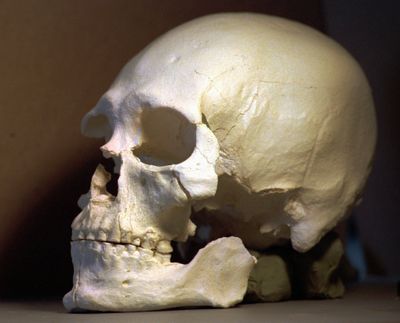Legislation would help tribes gain custody of Kennewick Man remains

For most of the 19 years since the ancient skeleton dubbed Kennewick Man was found on the banks of the Columbia River, Inland Northwest tribes have fought to have him turned over to them.
Sen. Patty Murray said Thursday it’s time for the skeleton to be released to the tribes. If it takes an act of Congress, she’s willing to set that in motion.
“After nearly two decades of legal wrangling and scientific studying, it’s well past time to return these prehistoric remains to their rightful place,” Murray said in a news release announcing the Bring the Ancient One Home Act of 2015. The remains of the man the Columbia Plateau tribes call the Ancient One would be removed from the custody of the U.S. Army Corps of Engineers, which keeps them at the University of Washington’s Burke Museum in Seattle, and turned over to the state for repatriation.
The legislation would open a new pathway for the return of the Ancient One, said Jackie Cook, a repatriation specialist for the Colville Confederated Tribes. Repatriating remains and relics is often time-consuming, but the effort to bring the Ancient One home has been especially frustrating, she said.
“The tribes have never given up their struggle,” said Cook, who has worked on repatriation efforts for the remains of tribal members for nearly 15 years.
Every year, the tribes perform a ceremony with songs and prayers at the Burke Museum, she said, because, “We don’t want him to ever think we’ve forgotten him.”
The Native American Graves Protection and Repatriation Act requires the return of tribal remains and relics. But the Ancient One is so old – at least 8,400 years old, according to carbon dating – some scientists argued he wasn’t connected to any current tribes and might not even be Native American, based on some of his physical characteristics. They wanted to study one of the oldest and most complete skeletons ever found in the Americas, and obtained a federal court order to keep it from being released.
The tribes later agreed to some limited DNA testing on a small bone sample. That decision was not reached lightly and came only after consultation with leaders and elders, Cook said.
Earlier this summer, the studies on that sample were released, and a report appeared in the scientific journal Nature.
“We find that Kennewick Man is closer to modern Native Americans than to any other population worldwide,” a panel of researchers wrote. Among the tribal groups they had tested, “several seem to be descended from a population closely related to that of Kennewick Man, including the Confederated Tribes of the Colville Reservation.”
The Colvilles were pleased with the results but not surprised, Cook said. They were happy for all the plateau tribes – the Yakama, Nez Perce, Umatilla and Wanapum – seeking repatriation of the remains.
“We all claim a kinship with each other and the Ancient One,” she said. “All the tribes have been involved in the struggle for the return of the ancestors.”
Murray’s bill could lead to congressional action that may converge with other repatriation efforts for release of the Ancient One, she said.
The legislation appears to be the first directed at the release of a specific set of Native American remains, said Kerry Arndt, a Murray spokeswoman. It would override the federal court orders keeping the remains in the custody of the Corps of Engineers, and turn them over to the Washington state Department of Archeology and Historic Preservation.
The state wouldn’t take physical custody of them, said Allyson Brooks, state historic preservation officer. Instead, the department would arrange to have the tribes retrieve the skeleton.
“We could have the Burke open their doors and let the tribes take him home,” she said.
The tribes plan a private ceremony to bring the Ancient One to a final resting place in an undisclosed location.